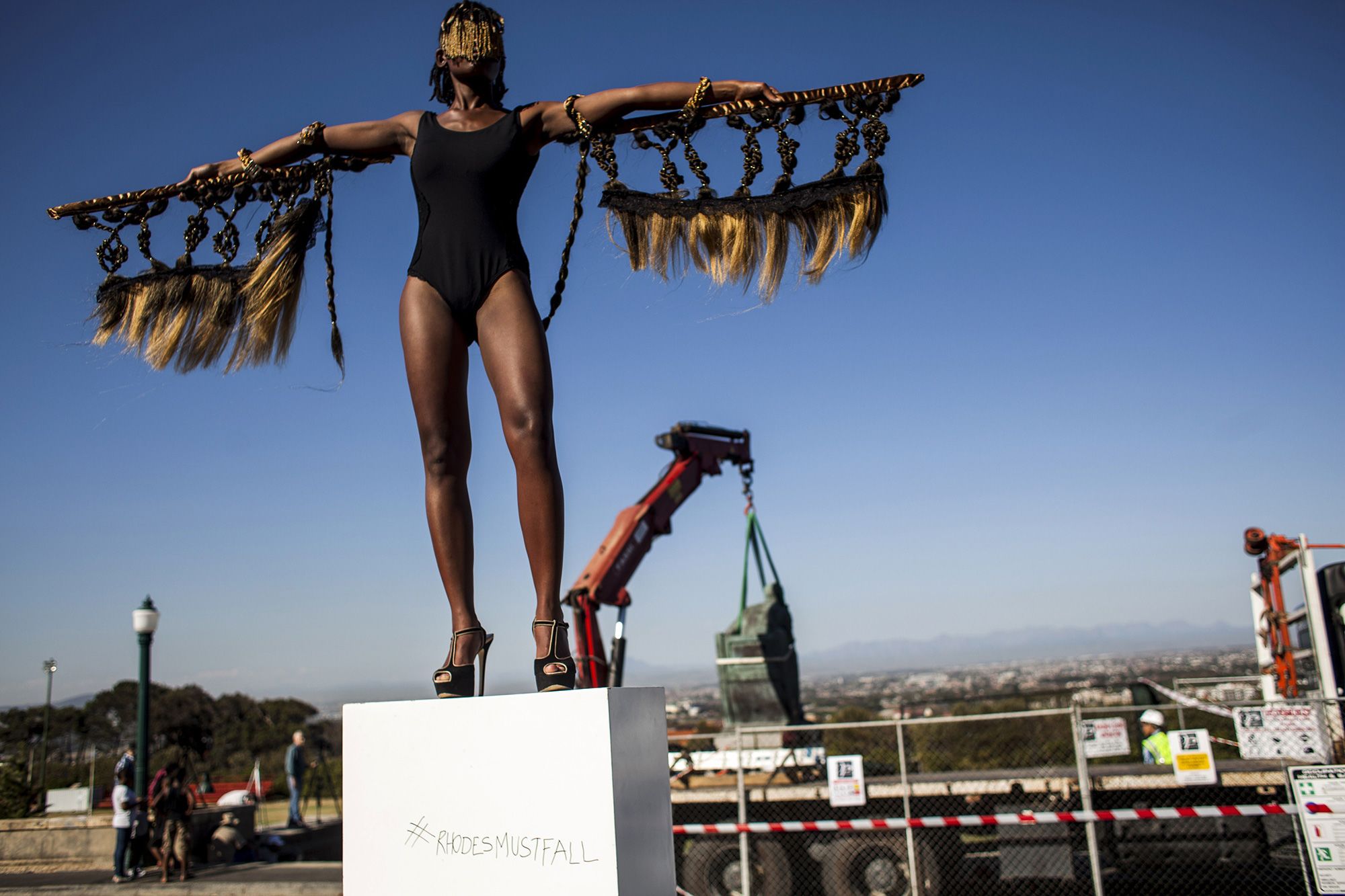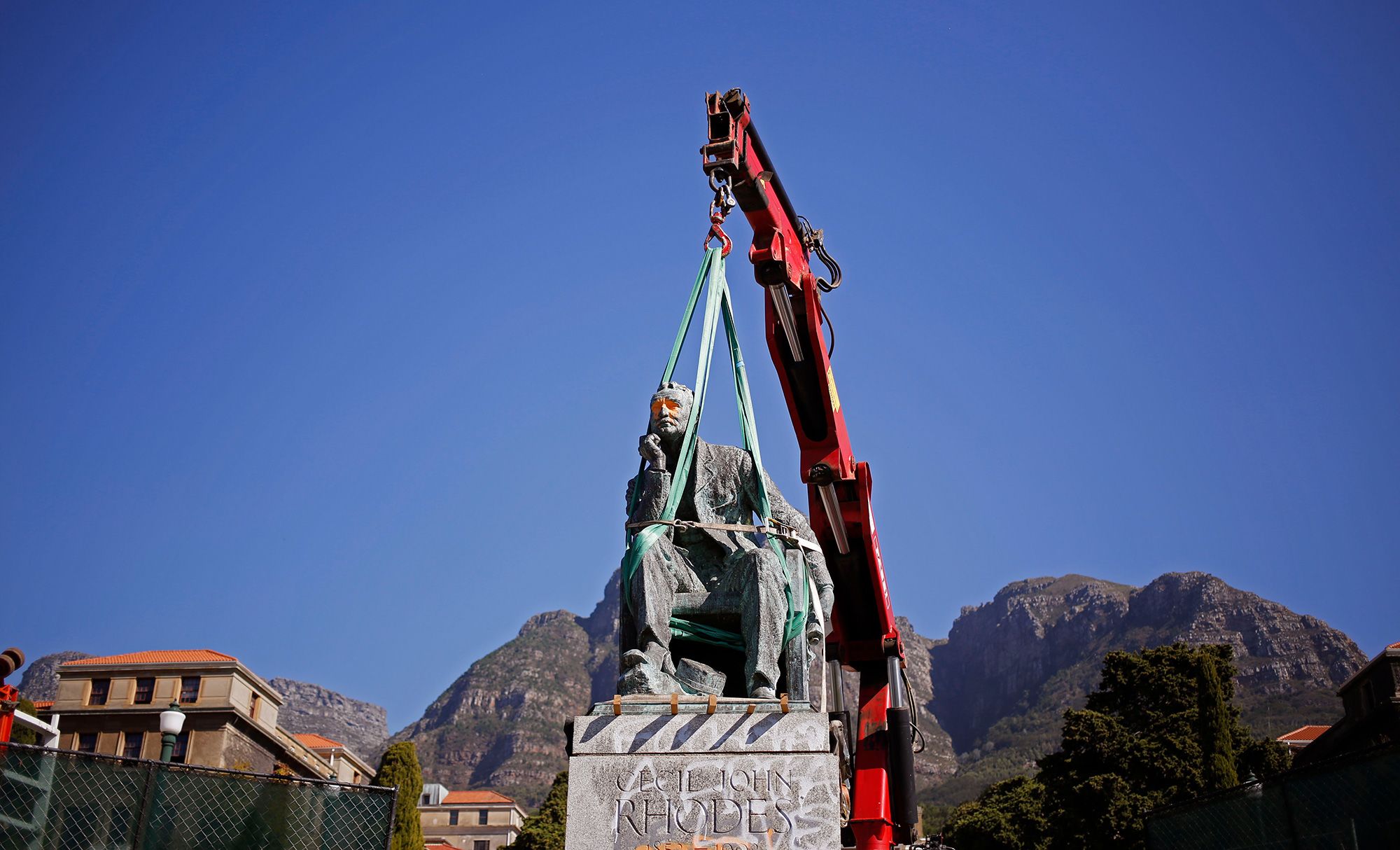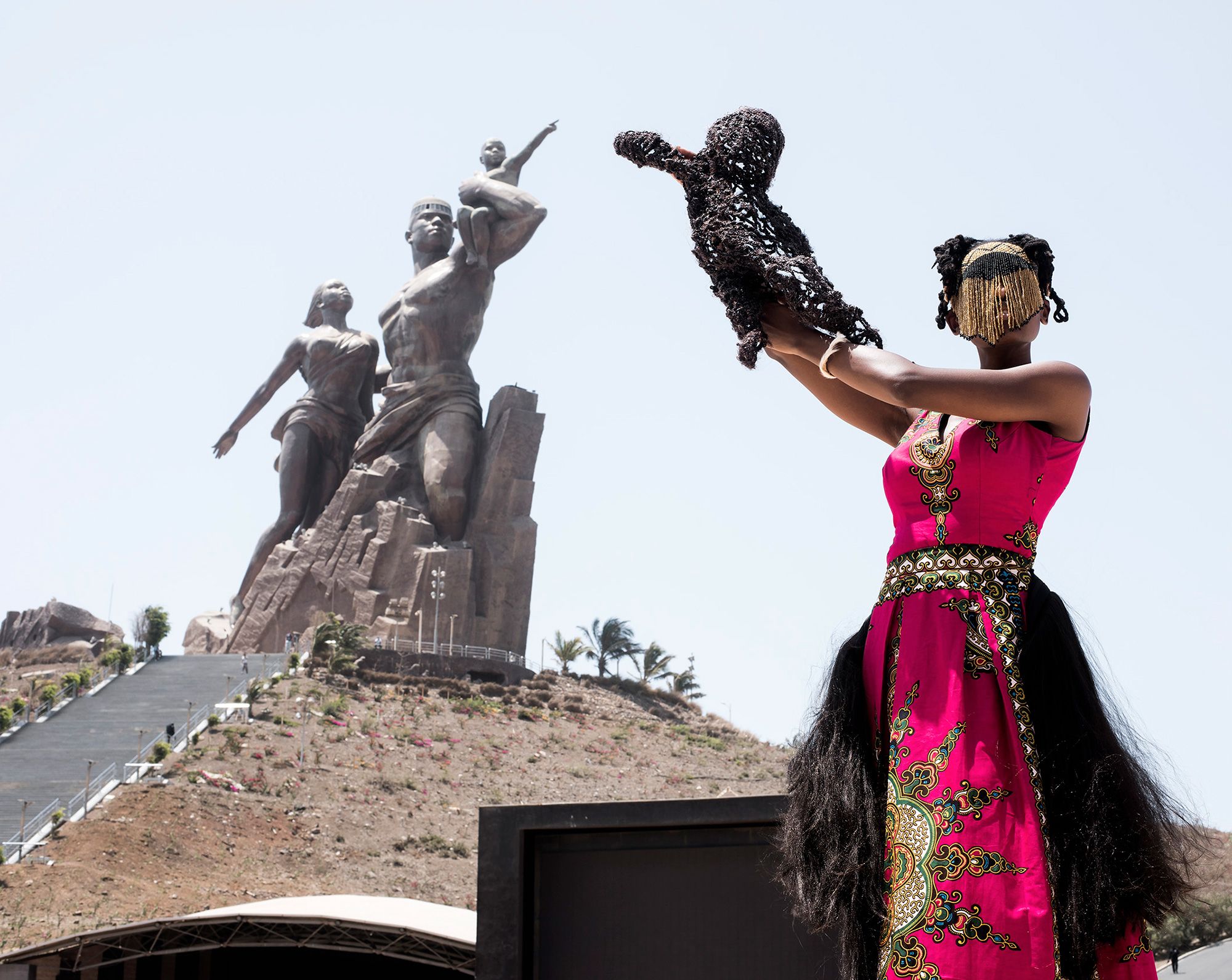Editor’s Word: In Snap, we take a look at the facility of a single {photograph}, chronicling tales about how each fashionable and historic photos have been made.
CNN
—
9 years in the past, Sethembile Msezane stepped on high of a plinth, carrying a black physique go well with and stiletto heels, her arms adorned with wings she customary out of wooden, velvet, and hair. Behind her, a statue of a person could be seen being lifted within the air. “Chapungu — The Day Rhodes Fell” has since grow to be an iconic {photograph}, capturing the spirit of the #RhodesMustFall motion which led to the elimination of nineteenth century colonist Cecil Rhodes’ statue on the College of Cape City.
Msezane was a learning for a Grasp’s diploma in High-quality Arts on the college in the course of the protests, which noticed college students name for the Briton’s statue to come back down, citing his legacy as being tainted with racism.
“There isn’t any method I may have conceptualized that second and the way in which issues unfolded on that day,” stated Msezane, talking to CNN from Cape City. Her efficiency, and the ensuing picture — which has come to function an emblem for the historic day — was born from a recurring dream that haunted her across the time the protest motion started.

The goals centred round “Chapungu,” a sacred Zimbabwean bateleur eagle who Msezane embodied atop the plinth together with her wings.
Eight of the birds — which maintain nice non secular worth for the folks of Zimbabwe — had been immortalised in green-gray soapstone within the historic metropolis of Nice Zimbabwe. As the location fell into disrepair, six had been subsequently looted, and within the 1800s, one statue of Chapungu was given to Cecil Rhodes. Whereas a number of have now been returned, to today, it remains at Rhodes’ former home on the Groote Shuur property in Cape City, Msezane defined.
“There have been political requires her to return dwelling, however for some motive, these calls have been denied,” she stated. “There’s a mythological perception that till she is returned dwelling, there shall be social unrest in Zimbabwe.”
Msezane says that Chapungu, who’s a totem of individuals’s hopes and aspirations in Zimbabwean society, was in collaboration together with her consciousness on the day Rhodes fell. “She used my physique as a vessel, and I accepted the decision.”
Even after the sculpture of Rhodes had fallen, Msezane stayed atop her plinth for one more 20-Half-hour. “It was necessary for (Chapungu) to be current in order that she may very well be seen, in order that we are able to start to see ourselves in her — and never in our historical past of subjugation and dispossession. That we too have histories of abundance and ancestral information.”
The picture is at the moment on show in London as a part of the South London Gallery and V&A Parasol Basis’s exhibition “Acts of Resistance: Images, Feminisms and the Artwork of Protest” which takes a journey by female-led resistance world wide, from the perils of unlawful abortion in Chile, Poland, and the US, to women-led protests in Iran and Bangladesh.
Creating the work took its toll. The Chapungu piece — which concerned Msezane standing on the plinth in excessive heels on a scorching day for practically 4 hours — was “fairly strenuous,” she stated. She would maintain the wings strapped to her arms aloft for 2 minutes earlier than having to relaxation for 10, then begin once more.
She was additionally afraid at the start. “While you make a piece like that, you’re fairly weak,” she defined.

“I used to be scared as a result of what if the police come and take me away, whereas this essential historic event is going on? What would occur to me, having been taken away carrying a leotard and a few stilettos? Would I be pushed over? Might I doubtlessly harm myself or die?”
Afterwards, she was shaking. Her limbs had been drained, her toes painful and her imaginative and prescient blurred. “All I needed had been my garments,” she says, of stepping off the plinth. “I simply needed to go dwelling and take a shower.”
When the Chapungu work garnered a lot worldwide consideration, Msezane continued on together with her life and didn’t suppose a lot about it.
“I used to be nonetheless throughout the pressure of what was occurring,” she stated, referencing the Rhodes motion and what would result in the Charges Should Fall marketing campaign. Whereas her work was receiving acclaim, she was being focused for her involvement with the motion.
“My work was being cited in all places and it meant little or no to me to be sincere, when that was the truth I used to be residing… the system nonetheless finds methods to oppress you, despite the fact that a piece like that can provide you a voice.”
Typically, she fears that the which means of the piece is misplaced — with the main target being on Rhodes and never the image of Chapungu, who has “grow to be a beacon of hope for a lot of.”
For Msezane, the work has impressed her to consider how else we may also help ladies world wide. She not performs “endurance works” like Chapungu, citing how taxing, harmful, and emotional such they are often. As an alternative, she makes use of her artwork as a instrument for change in different methods — comparable to by donating income from the gross sales of her work to fund charitable endeavors (she has beforehand supported the Panzi Hospital in Kinshasa within the Democratic Republic of Congo, which offers well being take care of over 80,000 ladies and women who’re survivors of conflict-related sexual violence).
From a younger age, Msezane was a artistic at coronary heart — expressing herself by poems, drawings, and gown, however she didn’t count on to grow to be an artist.

“I didn’t suppose that being an artist can be viable for me,” she defined. With encouragement from her aunt, she set off to check tremendous arts on the College of Cape City — an expertise which she describes as “very irritating,” as a result of curriculum’s Eurocentrism.
“I saved fumbling over ideas of Africans not being producers of their very own work however being faceless and anonymous.”
Whereas observing Cape City’s panorama and structure, Msezane grew to become impressed to consider what town needed to say about black ladies’s histories. “I discovered it to be fairly barren of our tales,” Msezane informed CNN.
This statement marked the beginning of her Public Holidays efficiency artwork collection, when Msezane would use the break day from her job as an arts administrator to stage performances within the metropolis.
“It grew to become a job for me to re-insert a few of the histories I used to be occupied with on political public holidays, in relation to colonial, male, European statues,” she stated. She carried out as Woman Liberty on Freedom Day, Rosie the Riveter on Employee’s Day. Not lengthy after, Msezane left her day job and began practising full-time as an artist. “It’s form of how life panned out… it was a calling.”
Now, suspended from a ceiling in a south London gallery, Msezane’s picture greets guests and instructions their instant consideration. “I would like for them to stroll in with a way of marvel and to let that marvel take over their senses,” she stated. “Once they view the picture, allow them to go the place they should.”


